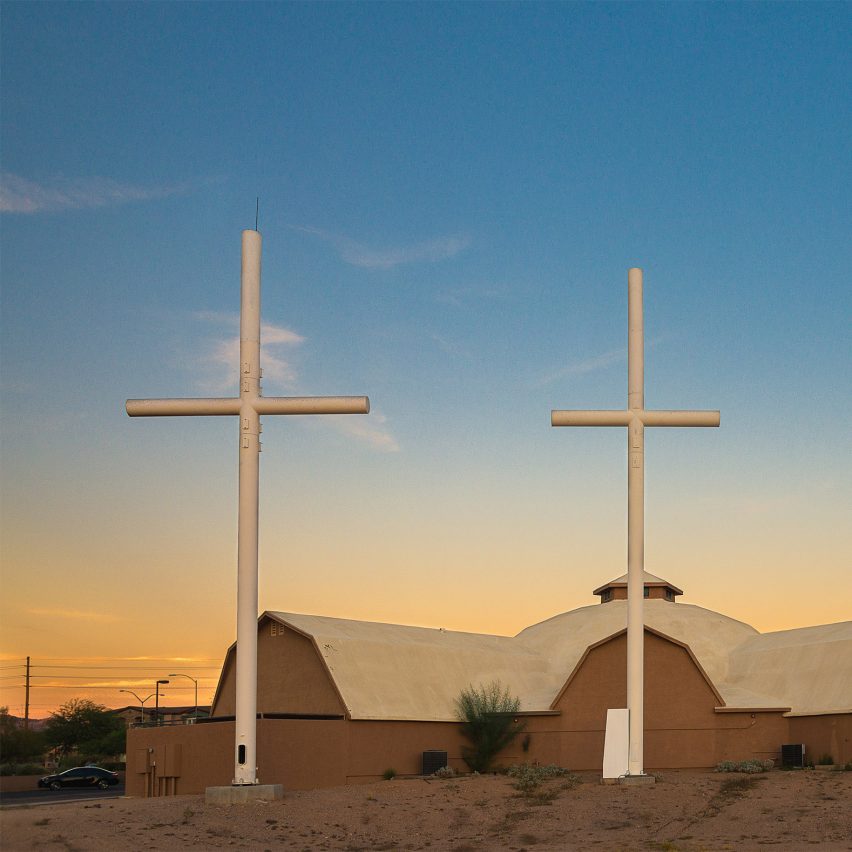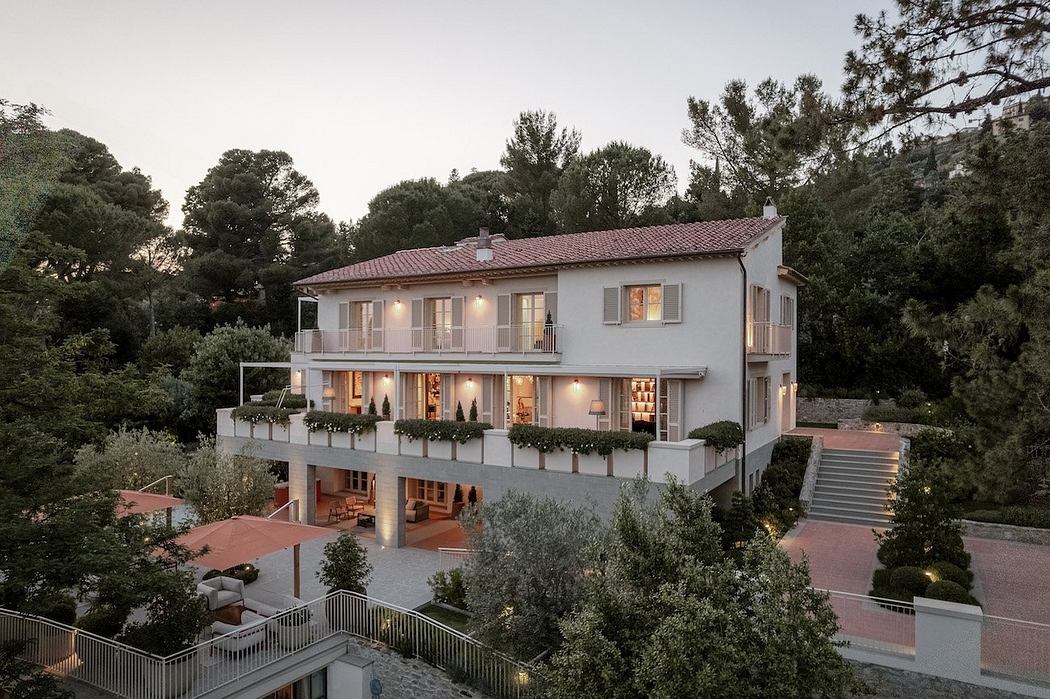Annette LeMay Burke documents America's camouflaged cell phone towers

American photographer Annette LeMay Burke's book Fauxliage showcases cell towers that have been designed to blend into their surroundings, including a pine tree in the middle of the desert, airbrushed cacti and church crosses.
The photographer traversed the American west to document the camouflaged mobile phone masts, which have fascinated her since she first came across cell tower "trees" in the early 2000s.
Above: the trees were designed to blend into the Western landscape. Top image: Palm Springs palm tree cell towers
The towers, which house antennas and electronic equipment for mobile phones, in her book were designed to look less conspicuous against the often stark landscape thanregular masts.
"Initially, I was simply amused by their appearances," Burke told Dezeen. "Then I noticed that instead of providing camouflage, the disguises actually drew attention to their true identities. I began to investigate the variety of forms and realised how technology was modifying our environment."
Pine tree cell towers are often found in colder climates
For Fauxliage, a combination of the words faux and foliage, she chose 66 masts to showcase, most of which are in California, Arizona and Nevada.
Each of the disguises are dependent on the climate, she explained, with palm tree cell towers located in the warmer regions and pine tree cell towers in colder climates.
Three crosses in Mesa, Arizona
While some of the images in the book show sci-fi-esque palm t...
| -------------------------------- |
| Phillip K Smith III and COS create wall of mirrors in historic Italian palazzo |
|
|
Villa M by Pierattelli Architetture Modernizes 1950s Florence Estate
31-10-2024 07:22 - (
Architecture )
Kent Avenue Penthouse Merges Industrial and Minimalist Styles
31-10-2024 07:22 - (
Architecture )






